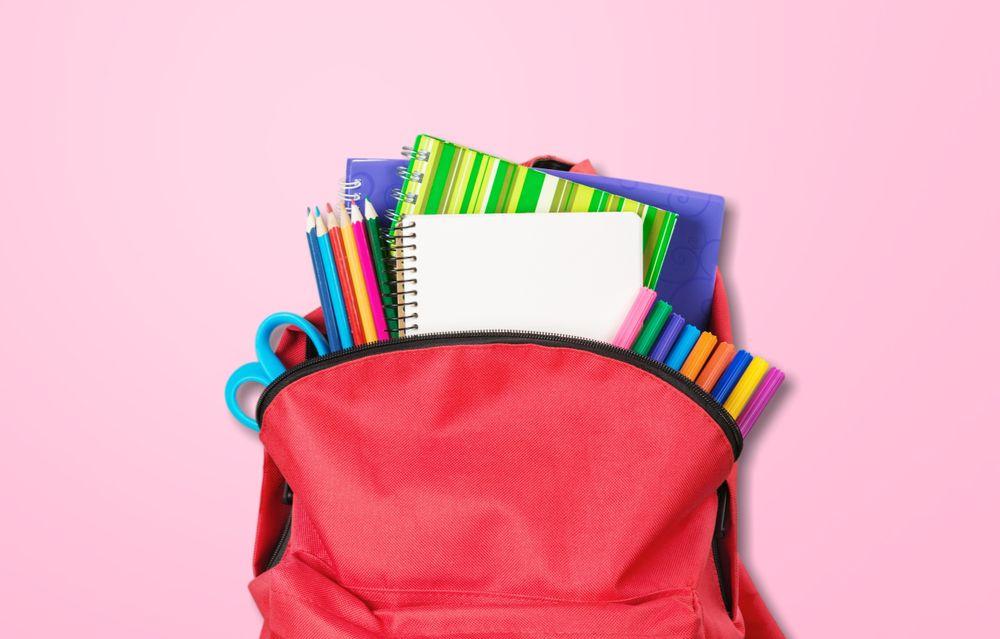Learning objective
- To name school bag objects and recognise if they are masculine or feminine.
Success criteria
- I can spot whether a noun is masculine or feminine.
- I can compose a sentence to tell someone about an item I have in my pencil case.
National curriculum
Languages
Pupils should be taught to:
- Describe people, places, things and actions orally and in writing.
- Understand basic grammar appropriate to the language being studied, including (where relevant): feminine, masculine and neuter forms and the conjugation of high-frequency verbs; key features and patterns of the language; how to apply these, for instance, to build sentences; and how these differ from or are similar to English.
See link: National curriculum - Languages - Key stage 2.
Cross-curricular links
None.
Before the lesson
Check all images, videos, links and presentation slides are suitable for your class.
- Presentation: Class commands.
- Presentation: Classroom objects.
- Feely bag for each table for the feely bag game (see Main event).
- Selection of physical classroom objects to correspond to the vocabulary for the lesson (see Main event).
- Two mini whiteboards and two pens (see Wrapping up).
Print in advance of the lesson.
Pupil phonics videos featuring Mouth Mechanics®
Show the following videos as an optional extra during or after the lesson to show the children how to pronounce any Spanish phonemes featured in the unit and how to practise each sound using Mouth Mechanics®.
Mouth Mechanics® is a key feature of the videos where native speakers demonstrate each phoneme in close-up, along with a clear and practical explanation of how to shape and produce the correct sound.
Use the videos to illustrate the correspondence between the letters and sounds and demonstrate how to read each sound in the context of various familiar words and sentences.
Subject knowledge
The French indefinite article – un and une
The children will already have come across the word un to meaning ‘one’. Un also means ‘a’ or ‘an’ in French and is the indefinite article (as opposed to the definite article, ‘the’, which in French is le, la l’ or les).
In French, each noun is allocated a gender. It will either be masculine or feminine.
- Un means ‘a’ or ‘an’ for masculine nouns.
- Une means ‘a’ or ‘an’ for feminine nouns.
The gender of a noun is important. Not only does it affect which form of the indefinite or definite article is used with the noun, but gender also affects any adjectives that are used to describe the noun. It is necessary in French for adjectives to ‘agree’ with the noun both for gender and whether the noun is singular or plural.
It is good practice to use the indefinite article when introducing new noun vocabulary as this means that the gender is learned along with the new word. The indefinite article is useful as the gender is not always clear with the definite article when l’ or les is used.
Pronunciation
Learning the indefinite articles un and une is a good opportunity to rehearse the very different sounds made by the vowel ‘u‘ and the nasal blend ‘un‘. See Pupil video: French phonics: u and Pupil video: French phonics: un.
Lesson organisation
Print the Activity: Pencil case flashcards double-sided (so each picture has the corresponding word on the back), laminate the card and keep them for the next lesson.
Lesson plan
1: Recap and recall
Display the Presentation: Class commands to remind the children of the command vocabulary that they learnt in the previous lesson, French, Year 3, In a French classroom, Lesson 1: Follow the French teacher.
Presentation: Class commands
Talking in pairs, ask the children to see how many instructions they can recall in one minute.
2: Attention grabber
Play the Pupil video: French phonics: un. Invite the children to practise the sound, watching their partner’s mouth shape and listening to make sure it matches what they can see and hear on the video.
Pupil video: French phonics: un
3: Main event
Display slide 1 of the Presentation: Classroom objects to introduce the new vocabulary for this lesson, saying or playing the audio for each item and repeating carefully several times.
Presentation: Classroom objects
Encourage the children to notice how the spelling and sound varies between the words un and une, and explain that these words can be used to indicate the gender of the noun (see Teacher knowledge).
Rehearse the new vocabulary many times over, pointing and repeating from the presentation or using the Resource: Pencil case flashcards.
Practise by playing the following games: noun gender sort, feely bag game, schoolbag race.
For the noun gender sort, move on to slide 2 and encourage volunteers to say one of the items and drag the picture to the masculine or feminine side of the board. Check answers together.
Next, put a feely bag on each table and tell the children these are filled with a selection of items they have just learnt about. Working in their table groups, ask the children to feel the contents of their bag and guess (in French) what they are. Once everyone had a turn, go through the contents of the bags as a class and name each of the items. Give the children some time to repeat the activity, feel what is inside and name the item in French.
For the next activity, the schoolbag race, divide the class into teams and give each team an empty feely bag. Have a selection of the same items from the key vocabulary list on each table. Call out a list of items to be packed. The teams race to find the items, put them in their bag and take their bag up to the front for inspection. For example, call out:
Dans mon sac, j’ai un crayon, un stylo et une gomme – In my bag, I have a pencil, a pen and a rubber.
Repeat a few times, making sure that at each inspection, the group can name the item, including whether it needs article un or une.
4: Wrapping up
Divide the class into two teams to play ‘Win, lose or draw’. Invite one player from each team to stand at the front of the class and whisper an item (or show the word on the flash card instead to make it easier).
These players then have to draw the item on a whiteboard and as soon as their teammates recognise it, they put their hand up to name the item in French. The first team to both identify the item and name it in French correctly scores a point. Then, pick new players to do the next drawing.
Keep the cards from the Resource: Pencil case flashcards for the next lesson.
5: During the week
Activity
- Make (or encourage the children to design) labels for different classroom equipment. Do this with other home languages within the class/school, too.
- Use a class French-English dictionary to find other items the children might have in their bags and decide whether they would go in the ‘masculine’ bag or the ‘feminine’ bag.
- Get the children to name items as they use them or put them away at the end of a lesson.
- Use the Pupil videos: Phonemes – Mouth Mechanics accompanying this lesson to practise phonics pronunciation with the children.
Extended-mode explainer videos
How to extend your display to view the lesson page and preseantion mode simultaneously. Choose your operating system below to watch the video
If you need further support with extending your display,
please contact [email protected].
Extended-mode explainer video: For Mac
Extended-mode explainer video: For Windows
Adaptive teaching
Pupils needing extra support
Could have a reduced list of words as appropriate, focusing on these items in each game; could have peer or adult support to recall and pronounce vocabulary accurately.
Pupils working at greater depth
Could ‘be the teacher’ and lead an activity; should create longer phrases naming multiple items.
Assessing progress and understanding
Pupils with secure understanding indicated by: identifying correctly masculine and feminine nouns in written form.
Pupils working at greater depth indicated by: noticing patterns in grammar and beginning to apply to new/unknown words; listening carefully and retaining a sequence of nouns, with the correct article.
Vocabulary
-
un crayon
a pencil
-
un taille-crayon
a pencil sharpener
-
un stylo
a pen
-
un cahier
an exercise book
-
un sac
a bag
-
une règle
a ruler
-
une gomme
a rubber
-
une trousse
a pencil case
-
j’ai…
I have
-
tu as ... ?
have you ...?
-
dans mon sac ...
in my bag ...
-
écoutez
listen
-
écrivez
write
-
lisez
read
-
fermez
close
-
ouvrez
open
-
regardez
look
-
parlez
speak
-
asseyez-vous
stand up
-
levez-vous
sit down
In this unit
Assessment - French Y3: In a French classroom
Lesson 1: Follow the French teacher
Lesson 2: Pencils and things in the French classroom
Lesson 3: To have or have not in the French classroom
Lesson 4: School bag French detectives
Lesson 5: In my French bag





